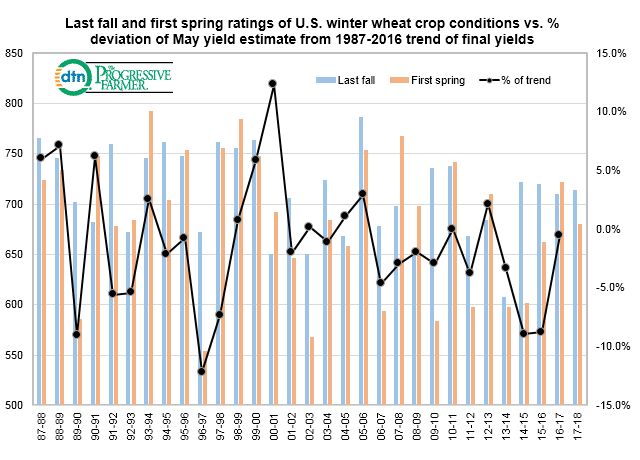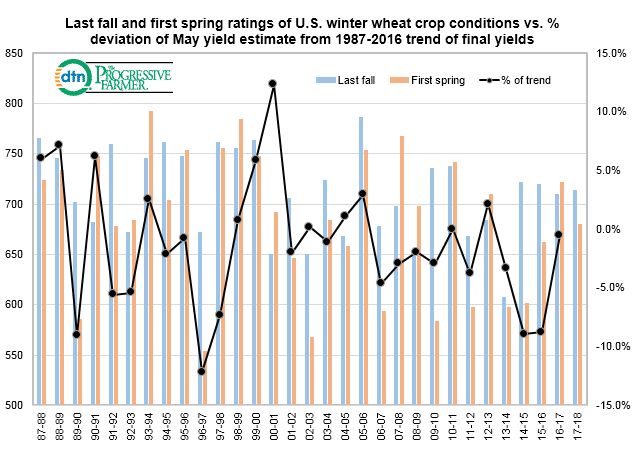Fundamentally Speaking
USDA Winter Wheat Ratings vs. Trend
Despite the lowest planted winter wheat acreage since 1909, the re-emergence of drought in areas of the Central and Southern Plains and various bouts of winterkill, wheat futures remain pinned near contract lows and within striking distance of the 10 year lows made last summer.
The fact remains that U.S. and in particular global supplies are more than ample if not burdensome with production prospects in other major producing regions generally good.
P[L1] D[0x0] M[300x250] OOP[F] ADUNIT[] T[]
Furthermore, weather in recent weeks appears to have improved with some of the best moisture since last fall arriving almost in the nick of time.
Hence, though the first spring crop rating for the U.S. winter wheat was below year ago levels, it is well above both the five and ten year averages.
Using our usual ratings system (where we weight the crop based on the percent in each category and assign that category a factor of 2 for very poor, 4 for poor, 6 for fair, 8 for good, and 10 for excellent and then sum the results) this week's rating comes in at 680, which though lower than the last fall reading of 714 and the year ago first spring reading of 722, is above the five and ten year averages respectively of 659 and 668.
The correlation between the first spring winter wheat rating and the percent that the May crop report deviates from the long-term trend is 53%.
Note that weather going forward especially during the critical heading period is most important for great spring conditions last year resulted in the May 2016 winter wheat yield estimate of 47.8 bushels per acre (bpa) which was just trend ending up at an eye-popping 55.3 bpa, a stunning 15.1% above trend.
(KA)






Comments
To comment, please Log In or Join our Community .